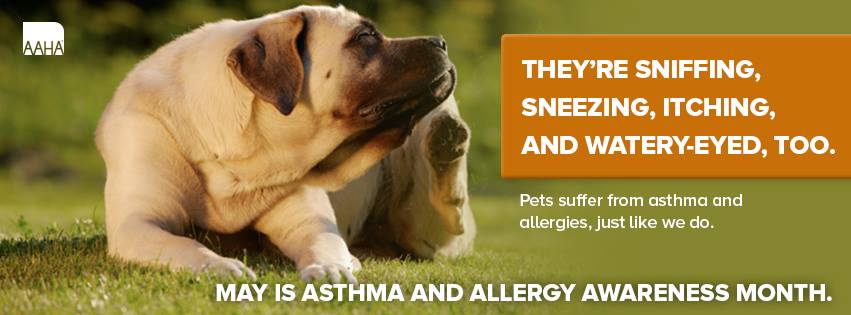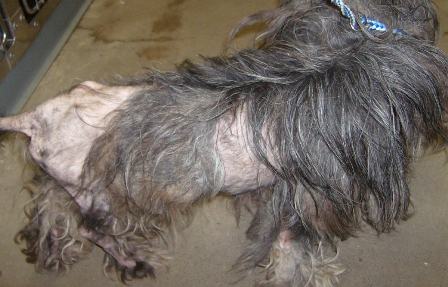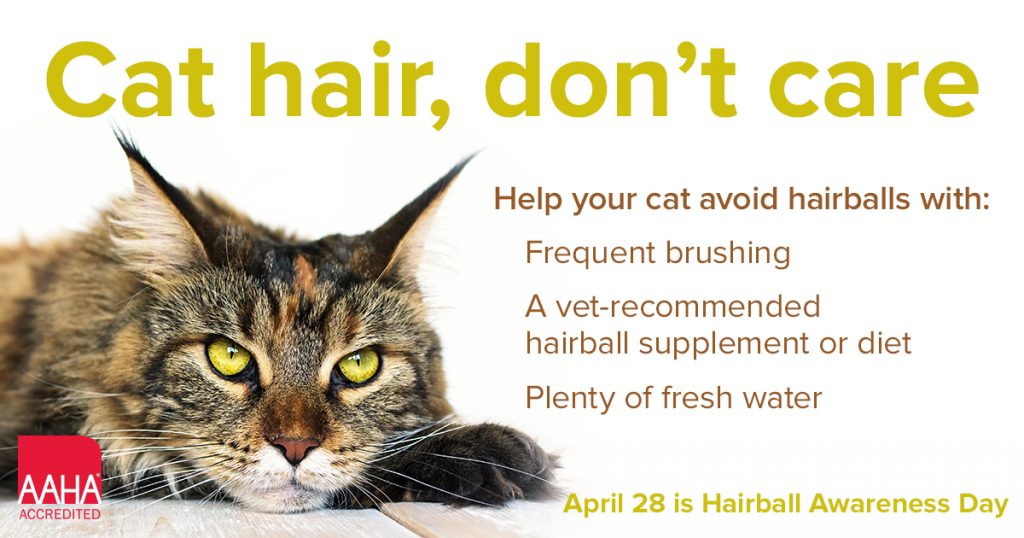
When your dog scratches, bites, or chews excessively, chances are he’s suffering from an allergy. The allergen, or cause of the allergy, could be virtually anything in his environment: fleas, inhalants like pollen, contact allergens like soap, seasonal allergens, or even food. Fortunately, preventative measures and treatments are available for all of these. Work with your veterinarian to identify your dog’s allergens and devise a treatment plan.
Fleas
The most common allergy affecting dogs is flea bites. To control fleas, you must treat both your pet and his environment. Flea collars, powders, sprays, shampoos, and dips can help rid your dog of fleas. Note, however, that excessive use of any of these products may be hazardous to your pet. Your veterinarian can also prescribe drugs that will kill fleas, or break their life cycle.
Additionally, treat outdoor areas that may contain fleas with an appropriate spray or fogger. To help control flea infestation within your house, clean and vacuum thoroughly. To control heavy infestations, you may need the services of a professional exterminator.

Inhalant & Contact Allergies
Inhalant allergies result from breathing in substances such as pollen from trees, certain plants, house dust, and mould. There seems to be a genetic predisposition to this allergy, but it can occur in any pet at any time of the year.
Contact allergies are caused by a pet’s physical contact with the irritating substance. They can occur both indoors and out. Thin-coated or hair-free areas are usually affected. Among the most common allergens are soaps, insecticides, wool or nylon carpets, paint, wood preservatives, poison ivy, oak, or grass. Some pets may even be allergic to plastic feeding dishes.
Identifying the offending substance is critical to controlling inhalant and contact allergies. Once discovered, every effort should be made to eliminate the allergen from your dog’s environment. Your veterinarian will be able recommend the appropriate treatment for most any allergy symptoms that arise.
Here are some remedies that may help eliminate or ease your dog’s allergies at home:
- Baths. Many pet stores carry special oatmeal or tea tree oil shampoos formulated especially for dogs with allergies or sensitive skin. Bathe your dog 3 to 4 times a week. You might also try having him sit in a bathtub filled with warm water.
- Brush your dog gently on a regular basis. This will help distribute oils and prevent any matting or tangling that might irritate the skin.
- Dust and vacuum your home often. This helps get rid of the dust mites that may be lurking in your carpets or furniture.
- Keep your pet indoors while you’re mowing the lawn or when there’s a lot of pollen in the air.
- Change furnace and air filters frequently. Also, if possible, run the air conditioner when it’s hot, and use a dehumidifier to prevent the occurrence of allergy-irritating moulds.
- Use hypoallergenic soap to wash your dog’s bedding?or anything else that comes in close contact with your dog. Many laundry detergents contain perfumes that can irritate your dog’s skin, so look for ones marked fragrance- and dye-free.
Seasonal Allergies
Come springtime, dogs develop allergies to everything from pollen to grasses, insects (especially fleas), and dust mites. Unlike humans who sneeze, wheeze, and get watery eyes during this itchy, scratchy season, dogs tend to react differently.
Here are some signs and symptoms to look for:
- Excessive itching
- Chewing at the feet. (Feet may also appear red and inflamed.)
- Constant licking, especially of the side or groin areas
- Skin may appear dry, flaky, crusty, or reddened
- Heavy scratching of sides and/or belly area
- Waxy or black discharge from ears
- Puffy, tearing. And reddened eyes
- Inflamed ears and/or constant ear infections.
Food Allergies
Dogs are not born with food allergies. However, they may develop allergies to food products that they’ve eaten for a long time. Such allergies usually appear as skin problems or gastrointestinal upsets?though variety of diseases have similar signs so make sure to rule out other causes before a pet’s diet is blamed or changed.
The most common food allergens are dietary proteins. In fact, no dietary protein source is completely non-allergenic. To reduce the likelihood of this allergic response?especially in a dog that has displayed food allergies in the past?feed him a diet with ingredients that he’s never eaten before. To be truly hypoallergenic, a diet must contain protein that has been broken down or “modified” sufficiently so that the immune system does not recognize them. Diets containing ?modified? protein sources, such as Purina Veterinary Diets® HA Hypoallergenic® brand Canine Formula, are available through your veterinarian.
Human Allergies to Dogs
People who say, ?I’m allergic to dogs? often cite doggy hair as the culprit. But you may be surprised to learn that the hairs themselves are not causing the allergic reaction; it’s actually the dog’s saliva, dander (shed skin), and allergens on the hair shaft.
If you do have allergies, take note: The more allergens you’re exposed to, the more severe your allergic reaction will be. To minimize the amount of allergens in your home, consider these preventative steps:
- Bathe your dog frequently (every 1?2 weeks). This loosens up hair and dander, washing the allergens away.
- Adopt a breed believed to have less hair and/or dander.
- Designate several rooms of your home off-limits to your dog?including your bedroom.
- Dust frequently (especially in your bedroom), removing carpets, and keep upholstered furniture to a minimum.
- Regularly wash everything that can trap dander (drapes, bedding, blankets, stuffed toys).
- Install a high-efficiency electrostatic air filter in your home.
- Vacuum and polish floors weekly. Use a 3% tannic acid solution on carpets to help destroy allergens without harming the carpet.
- Talk to your doctor about allergy shots if you’re highly sensitive to dogs.
It is possible to co-exist with your best friend, even if you suffer from allergies. Try following the suggestions above and, if you need more advice or treatment , talk to your doctor.

